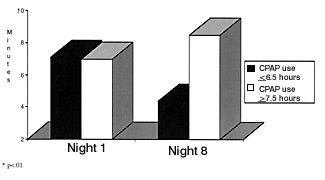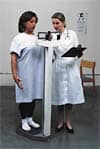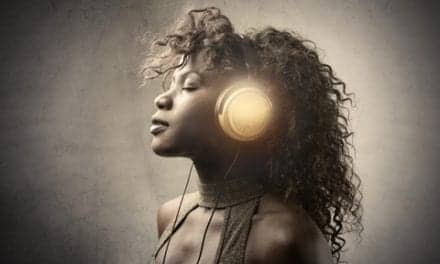Light therapy offers many benefits to both patients and clinicians as it is considered a useful tool for a wide variety of conditions.

SAD may be the condition for which light therapy is best known both to health care professionals and to the lay public and, because of its familiarity, provides a good example of the issues surrounding this treatment modality. The use of light stemmed from the lack of consistent daytime sunlight during the winter months. It was hypothesized that if one’s depression was caused in part by reduced natural light exposure, a regular pattern of exposure to artificial light could have an antidepressant effect. Just what would constitute a regular pattern of exposure is a good example of one of the clinical challenges of light therapy—how much and for how long. Before controlled studies, clinicians used a wide variety of treatment patterns for patients. Some involved day-long efforts at maximizing light exposure. Others used bursts of intense light lasting from a few minutes to an hour. Exposure schedule varied widely as well, with some advocating morning light, others backing evening light, and still more trying both.
Regarding SAD, one landmark review of light studies compared sessions in the morning and evening, and found that the twice-daily dosing provided no benefit over morning-only treatment. It also examined the brightness and duration of light exposure—key variables in therapy. Brighter light exposure tended to have the best results compared with lower-light exposures of similar duration.1 The source of light most often used is a light box, which may be set up in the home. The amount of illumination provided is measured in lux, a factor of not only the inherent brightness of the device but also the distance to the target subject. The lux measure of bright mid-day sunshine may be measured in the tens of thousands, and evening households may be as low as 50 to 100 lux. Many commercially available light boxes provide approximately 10,000 lux illumination at a specified distance from the user. It is not necessary (or recommended) that the subject look directly at the light source; often people will read or perform other typical morning tasks with the light source nearby, within the recommended therapeutic distance. One national consensus statement believes that daily morning exposure to at least 30 minutes of bright (10,000 lux)2 light is effective. The number of days over which a patient receives therapy also has an effect. A patient needs to take antidepressants for a period of time before therapeutic effects are noted, and one study showed that light therapy was effective for SAD only after at least 3 weeks of treatment, noting that daily compliance is key.4
In general, people have significantly less light exposure during waking hours than in the past. Part of this is environmental, as many people in industrialized societies spend their waking hours inside under artificial light. Coupled with this is a tendency to wake later and stay up later than our ancestors. Home indoor lighting can be extraordinarily low-level. Often the only light in a room may be a television, which might appear bright but provides little whole-room illumination. Average evening illumination in one study was only in the range of 30 lux.5
How does it all work? Light therapy appears to have an impact on melatonin secretion from the pineal gland. Melatonin has a direct effect on the body’s sleep-wake cycle. In addition to promoting somnolence, it tends to diminish alertness and can have negative impacts on performance. Bright light exposure (as at dawn) tends to reduce melatonin secretion, whereas onset of dim light (as at twilight) enhances secretion.6 It is this effect on somnolence and performance that may lie at the heart of light therapy’s efficacy in the treatment of all forms of depression.
Light Therapy Safety
The intensity of most light therapy regimens is less than what one would experience during most daytime outdoor exposure. Common side effects are those that one might expect to find in people that are somewhat sensitive to prolonged or bright sunlight, headache being the most common. This is sometimes related to the use of the device; patients need to be reminded that it is neither necessary nor beneficial to look directly at the light, anymore than one needs to look at the sun to experience a beneficial response to sunlight. Offset lighting directed toward the patient will suffice.
While the inherent brightness of the majority of devices falls within what are generally considered safe norms, the wavelengths of light from therapy devices have been subject to considerable scrutiny. No clear advantage has been demonstrated in most studies for one type of wavelength distribution vs another. Ultraviolet (UV) and infrared exposures can vary widely among the types of bulbs and devices used. UV light in particular can be problematic for people who are photosensitive. This includes both medication-induced photosensitivity and photosensitivity secondary to physical traits or disorders (cataracts or retinal pathology). It would be prudent to secure ophthalmologic clearance for, and regular monitoring of, these patients before initiating therapy. It would also be appropriate to discourage patients from using nontherapeutic sources of light such as plant-growing lights or home-made light sources.
In addition to side effects related to photosensitivity, light therapy carries inherent risks directly related to the targeted effect on the body. A shift-change in the circadian rhythm that causes patients to awaken too early, thereby truncating sleep time, can undermine the beneficial effects of therapy. Rare cases are cited of manic episodes, which may require concomitant mood-stabilizing medication or cessation of light therapy.7 While it may seem unlikely that patients would engage in the use of power tools or kitchen appliances during light therapy, the prudent provider needs to remember that the strobe light effect of fluorescent lighting (common in many light box arrangements) may cause rapidly moving items (power saws or kitchen food processors) to appear immobile. Many accidents have occurred when a person has touched an apparently stopped or locked-up blade.
Devices
A simple search on the Internet for light therapy will yield a bewildering array of products. Light boxes, spotlights, and light visors all claim efficacy for treating a variety of disorders, especially SAD. It is important to remember that at present, there is no government-sanctioned standard for light therapy devices. Most treatment protocols designed and used by clinicians have tended to focus on the light box-style of device (indeed, the visor style has not been proven to provide any benefit over light box therapy, and some studies have actually shown decreased efficacy).8 Patients should be referred to manufacturers and retailers who can provide standardized lux intensity measures at various distances for their device.
It seems obvious that light therapy necessarily means ocular light exposure. Some researchers have tested the efficacy of extraocular exposure (popliteal light in one groundbreaking study by Campbell and Murphy9 enhanced rapid eye movement sleep). Others have found no effect with extraocular exposures.10
Delayed Sleep Phase Syndrome
Patients with DSPS have a “night owl” sleep pattern, often incapable of falling asleep until well into the early morning hours, between midnight and 3 am (or later). They may sleep until the late morning or early afternoon. This is a common pattern seen in both teenagers and young adults. For some, the lifestyle that comes with this pattern is not troublesome, but for others, trying to fit their sleep style into a “regular” pattern is a cause of considerable stress and frustration. Light therapy has been used as an adjunct to behavior modification to assist in resetting the circadian pattern. Once the sleep schedule has been changed to a more typical evening-to-bed, morning-to-rise schedule (often by advancing the to-bed time over several days), morning light therapy can be used to entrain the new schedule through morning melatonin suppression. Light therapy would typically be used 20 minutes or more between 7:30 am and 9:30 am in the morning. Some studies have even shown success simply by exposing the patients to early morning light therapy with early evening light restriction, in the absence of a conscious effort at schedule-changing. Patients spontaneously changed their sleep-wake schedule to correspond to the light exposure and restriction pattern of the treatment protocol.11
Advanced Sleep Phase Syndrome
This is a “Ben Franklin” pattern of early-to-bed, early-to-rise, not infrequently observed in the elderly. Patients will often go to bed in the early or mid evening (7:00 pm to 8:00 pm), sleeping until the middle of the night (3:00 am to 4:00 am), and then awaken to start their day. This may, in fact, be closer to how our systems have been “hardwired” for centuries, as people went to bed at sundown, arising near dawn. In early times, this was the time to begin hunting and gathering. Later, it became the time to engage in agriculture. It was not until more “advanced” times, particularly with more and more artificial light and artificial stimulation, that we as a species had to adapt to a later sleep-wake pattern. As with DSPS, ASPS causes little impact for some, but can be a significant social, familial, and professional hardship for others. Light therapy here is generally given in the afternoon or early evening in an effort to entrain the body to accept early evening as an “awake” period. Light therapy would typically be used 20 minutes or more between 4:30 pm and 6:30 pm in the evening. Gradual, progressive delays in bedtime then serve to move the sleep period later and later until the patient settles into a more acceptable schedule.12
Shift Work Syndrome
Shift workers face particular challenges with regard to their sleep patterns. They face the social and family pressures of sleeping during the rest of the world’s waking hours. They also have light exposure patterns that may conspire against any adjustment in their sleep-wake pattern. An overnight worker may emerge from work after dawn, exposed to bright sunshine at a time when their individual schedule says it is “evening.” They may sleep during daylight hours, awakening to start a new work “day” as the evening sun is setting. This is opposite from the typical biologic pattern of daytime sun exposure with melatonin suppression, followed by evening darkness with melatonin secretion. Shift workers may benefit from light therapy at the beginning of their “day,” before work. Just as important is the benefit of light avoidance on the way home—dark sunglasses while driving home in bright morning light (the shift worker’s “evening”) may help in resetting the body clock to be more in sync with the work clock.
Light therapy offers many benefits to both patients and clinicians. It offers some level of efficacy in treating a number of disorders, is low cost relative to many therapy regimens, is generally readily accessible, and has a low side-effect profile. Like all treatments, it is not without problems and pitfalls, but it should be considered as a useful tool for a wide variety of patients and conditions.
David M. Margelli, PA-C, is a clinician; Daniel I. Loube, MD, is associate medical director; and Ralph A. Pascualy, MD, is director, all at Swedish Sleep Medicine Institute, Seattle.
References
1. Terman M, Terman J, Quitkin F, et al. Bright light therapy for winter depression: a review of efficacy. Neuropsychopharmacology. 1989;2:1-22.
2. Lam R, Levitt A, eds. Canadian Consensus Guidelines for the Treatment of Seasonal Affective Disorder. Vancouver, Canada: Clinical and Academic Publishing; 1999.
3. Eastman CI, Young MA, Fogg LF, Liu L, Meaden PM. Bright light treatment of winter depression: a placebo-controlled trial. Arch Gen Psychiatry. 1998;55:883-889.
4. Lam R. Re-examining seasonal affective disorder. Psychiatric Times [serial online]. 2002;10. Available at: http://www.psychiatrictimes.com/p021063.html. Accessed April 23, 2004.
5. Youngstedt S, Kripke D, Elliot J, Baehr E, Sepulveda R. Light exposure, sleep quality, and depression in older adults. In: Holick M, Jung E, eds. Biologic Effects of Light. Boston: Kluwer Academic Publishers; 1999:427-435.
6. Chokroverty S. Sleep Disorders Medicine. Boston: Butterworth-Heinemann;1999:624-625.
7. Chan P, Lam R, Perry KF. Mania precipitated by light therapy for patients with SAD. J Clin Psychiatry. 1994;55:454.
8. Teicher MH, Glod CA, Oren DA, et al. The phototherapy light visor: more to it than meets the eye. Am J Psychiatry. 1995;152:1197-1202.
9. Campbell S, Murphy P. Enhancement of REM sleep during extraocular light exposure in humans. Am J Physiol Regul Integr Comp Physiol. 2001;280:R1606-R1612.
10. Koorengevel K, Gordijn MC, Beersma DG, et al. Extraocular light therapy in winter depression. Biol Psychiatry. 2001;50:691-698.
11. Rosenthal NE, Joseph-Vanderpool JR, Levendosky AA, et al. Phase-shifting effects of bright morning light as treatment for delayed sleep phase syndrome. Sleep. 1990;13:354-361.
12. Dement W. Advanced sleep phase syndrome, 1999. Available at: http://www.stanford.edu/~dement/advanced. html. Accessed April 20, 2004.




